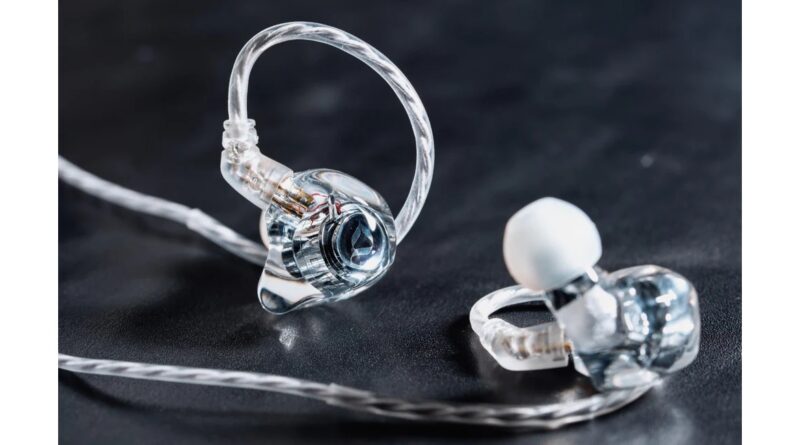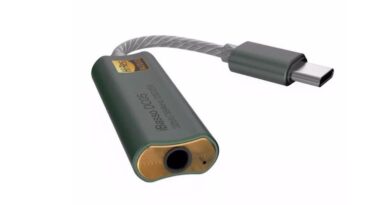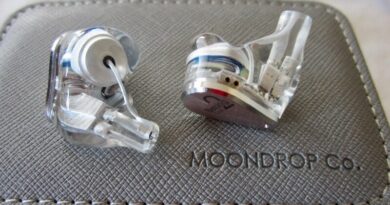Dita Project-M Review – Solid And Dry
Singapore-based DITA has a good reputation for high end (and price) IEM models. They recently ventured into low budget territory for their first time with their $325 hybrid dual-driven Project-M, which I found at an interesting price at a second-hand sale a couple of months ago. I acquired them, assessed them and resold them – and what follows are my impression in the usual schematic format.
In this Article
At-a-glance Card
| PROs | CONs |
| Class-defining layering and separation | Excessively dry, transparent, inexpressive timbre |
| Very good, airy, detailed, energetic treble | Lean mids |
| Well executed V shape tonality | (modest) timbre incoherence |
| Good solid bass | Carry case a tad too thin |
| Convincing build quality | Fit may not meet everyone’s preference |
| High value |
Full Device Card
Test setup and preliminary notes
Sources: AudioQuest DragonFly Cobalt / Chord Mojo / E1DA 9038D, 9038SG3 / Questyle QP1R, QP2R, M15, CMA-400i / Sony WM-1A – INAIRS foam or JVC SpiralDot silicon tips – Stock cable – lossless 16-24/44.1-192 FLAC + DSD 64/128/256 tracks.
I am not writing these articles to help manufacturers promote their products, even less I’m expecting or even accepting compensation when I do. I’m writing exclusively to share my fun – and sometimes my disappointment – about gear that I happen to buy, borrow or somehow receive for audition.
Another crucial fact to note is that I have very sided and circumscribed musical tastes: I almost exclusively listen to jazz, and even more particularly to the strains of post bop, modal, hard bop and avantgarde which developed from the late ’50ies to the late ’70ies. In audio-related terms this implies that I mostly listen to musical situations featuring small or even very small groups playing acoustic instruments, on not big stages.
One of the first direct consequences of the above is that you should not expect me to provide broad information about how a certain product fares with many different musical genres. Oppositely, you should always keep in mind that – different gear treating digital and analog sound in different ways – my evaluations may not, in full or in part, be applicable to your preferred musical genre.
Another consequence is that I build my digital library by painstakingly cherry-pick editions offering the least possible compression and pumped loudness, and the most extended dynamic range. This alone, by the way, makes common music streaming services pretty much useless for me, as they offer almost exclusively the polar opposite. And, again by the way, quite a few of the editions in my library are monoaural.
Additionally: my library includes a significant number of unedited, very high sample rate re-digitisations of vinyl or open-reel tape editions, either dating back to the original day or more recently reissued under specialised labels e.g. Blue Note Tone Poet, Music Matters, Esoteric Jp, Analogue Productions, Impulse! Originals, and such. Oppositely, I could ever find an extremely small number of audible (for my preferences) SACD editions.
My source gear is correspondingly selected to grant very extended bandwidth, high reconstruction proweness, uncolored amping.
And finally, my preferred drivers (ear or headphones) are first and foremost supposed to feature solid note-body timbre, and an as magically centered compromise between fine detail, articulated texturing and microdynamics as their designers can possibly achieve.
In terms of presentation, for IEMs I prefer one in the shape of a DF curve, with some very moderate extra pushup in the midbass. Extra sub-bass enhancement is totally optional, and solely welcome if seriously well controlled. Last octave treble is also welcome from whomever is really able to turn that into further spatial drawing upgrade, all others please abstain.
Signature analysis
Tonality
Project-M offer a very well executed V-shaped presentation, with solid bass, airy and sparkly treble and recessed mids. What instantly catches the user attention, however, more than tonality is their unique timbre: they carry solid, well rounded note weight which – unlike what most usually happens in similar cases – comes across as pretty much totally uncolored, dry, with zero concession to subjective musicality.
After quite some listening I came to the guess that such design choice was intended to mitigate the foreseeable timbre incoherence between Project M’s DD and BA drivers – which *is* indeed there – and should my guess be right I’d also have to say that designers did hit very, very close to their intended target.
Going back to Project-M’s timbre, it’s a sort of one-of-a-kind sensation: I tagged a few other IEMs earlier as “neutral” or “transparent” in the past, but if I now compare them to Project-M I’ll say that each one of those has some sort of “flavour” or “colour” in comparison.
If Project-M sound were a photograph, it would definitely be a gray scale shot, and one taken on a not particularly smooth film, too (let’s say… an Ilford HP-5, for those who know what I’m talking about)
Sub-Bass
Sub bass is fully extended and bit more prominent than midbass, without however stealing the scene from the latter at any point. Very well calibrated.
Mid Bass
Midbass is well-rounded, not fat (dry, indeed), moderately elevated, and perfectly controlled. Transients are tight however not razor sharp, so notes are in facts well textured, definitely punchy yet at the same time expressive and internally articulated. Very well done, in its “category”.
Mids
Mids are recessed in terms of presentation, and very obviously dry in teems of tonality. Although note body is not lacking, they can’t be called “organic” – and my educated guess is it’s never been in the tuner’s intention for them to be. High mids (and low trebles) are also well rendered, and carry a less dry, more “greased” body.
Male Vocals
Although energetic and round-noted, male vocals are off in terms of organicity and timbre. Don’t choose Project-M if you like opera tenors or male songwriters… 🙂
Female Vocals
Female vocals (and guitars) are definitely better. Notes are good, full and almost tactile. The lack of “color” (see above) is what makes them scarcely organic and therefore not to realistic, but apart from that their rendering is measured, energetic yet never excessive, and pleasing.
Highs
Project-M carries airy, detailed, energetic, sparkly, yet nevertheless organic treble, which is one of their best points.
There seems to be a sort of particular empathy to metallic sounds (hi hats, cymbals) which are played in a, let’s say, unequivocally metallic way. Let me be clear here: I’m not talking about a metallic sheen – which is what happens when a driver adds some metallic sound or nuance where there shouldn’t be one: Project M don’t do this. What happens instead is that notes representing metal percussions sound specially realistic, sparkling, dry and well detailed, without however being piercing.
Upper trebles are also well extended and very airy, which contributes to the overall spatial capabilities of the product of course.
Technicalities
Soundstage
Soundstage is very well extended left-right, and has very good depth, while it’s quite flat in terms of vertical extension.
Imaging
Macrodynamics are wonderful on Project-M with just spectacular instrument positioning on the stage.
Details
Detail retrieval is also very good on Project-M, especially in the treble as I already mentioned above.
Microdynamics, however, are somewhat lacking at times, unavoidable consequence, I’m afraid, of those tight transients which on the other hand support large part of Project-M’s imaging and layering proweness.
Instrument separation
Layering and separation are beyond outstanding when we consider this product’s price tag, and I really mean it.
As a matter of facts I think these are the single best IEMs below 5-600€ on this aspect, and what’s probably even more interesting is that I can name only a single other vendor / product range coming seriously close to them (more on this under Comparisons, here below).
Driveability
One extremely important note about Project-M is they are no joke to drive, and this even on two levels. Firstly, they do require quite some power to “just sound right”: as a reference, I needed to switch my Sony NW-WM1A to High Gain to get them the right amount of juice for their needs – with that sacrificing on microdynamics (due to WM1A’s own quite hearable dynamic range compression on High Gain mode).
In addition to that, Project-M furtherly scale with power. Driving them with a source capable of delivering a thicker current flow on low-ish impedance loads makes microdynamics better, and layering even sharper (in the good sense).
Physicals
Build
Driver shells, cable and accessories exude quality, and that’s totally apparent. Housings in particular present themselves are very harmonically designed, totally solid, and elegantly finished. The over al perception is definitely that of a premium product, in spite of the relatively modest price.
For lack of a better place, I add here a short note about the case: obviously nice, eye-catching, original and all… but a bit too small – in particular, a bit too short in height: you need to fiddle a bit with the housings’ positions inside the case prior to closing it every time. What a pity…
Fit
Project-M’s nozzles are very long, and stand on top of a protrusion of the shells, all of which calls turns into a quite deep fit inside the canal. For whatever reason I couldn’t find a size suitable for my ear canals within stock eartips (a special photosensitive-glowing variation of otherwise standard Final Type-E Clears), and after a quite long rolling session I settled on Spinfit CP-145 silicons, or INAIR AIR-1 foams.
Comfort
Comfort is a hit or miss, as it all basically depends on one welcoming the abovementioned quite deep fit or not. Nozzles are not even thin, either, so you can bet that the insertion depth won’t go un-noticed.
Isolation
Due to their deep-ish fit, and to the shape of their housings, Project-M offer above-average passive isolation.
Cable
For once, the cable coming bundled with the product is in line with the main item quality – which is sadly not common at all in the sub-500$ market. Very welcome is the presence of an apparently reliable multi-termination system, and dual (single-ended and balanced) terminations included with the standard package.
Specifications (declared)
| Housing | Slow pour, transparent resin mix structures, encasing FEA (Finite Element Analysis) supported specially designed sound tube profiles optimised for Project M’s dynamic driver |
| Driver(s) | 1 Dita’s proprietary PM1+ 9.8mm dynamic driver + 1 Knowles 33518 Balanced Armature driver |
| Connector | 2pin 0.78mm |
| Cable | 1.2m Dita MOCCA cable, featuring 16 strands of Cardas conductors per cable, twisted to DITA’s specifications and jacketed in a flexible PVC outer layer. Cable carries APV2 (Awesome Plug, Version 2), Dita’s proprietary modular replaceable termination plug system. A 3.5mm and a 4.4mm plug modules are bundled with the standard package- |
| Sensitivity | 107 dB/mW |
| Impedance | 32 ohm |
| Frequency Range | 20 Hz- 20 kHz |
| Accessories and Package | Tanos “Systainer” carry care, set of 5 sizes (LL, L, M, S, XS) Final Type-E glow-in-the-dark white silicon tips, 3.5mm single ended and 4.4mm balanced ended replaceable cable plugs. |
| MSRP at this post time | $325 + import costs |
Comparisons
As I tried to outline, Project-M are very good overall, but when talking about layering and separation in particular I can quite confidently that there is very little if anything close to them at less than 5/600$ price. As a matter of facts, I experienced very, very few IEMs costing less then half a kilo buck which come close to Project-M, and Project-M are the sole ones manufactured by in China / Singapore.
Intime Miyabi (JPY 25300 + import costs)
Miyabi’s presentation is flat-neutral, quite different from Project-M’s evident V shape. In addition to that, Miyabi’s tonal neutrality actually sounds slightly, but quite evidently, yellow/warm-colored compared to Project-M’s unforgiving uncolored + unflavored timbre. Musically wise Miyabi take the lead hands down.
Midbass is less elevated but a tad more “greasy” on Miyabi. Mids and vocals are very obvsiously more organic on Miyabi. Treble is obviously more detailed, energetic, sparkly and if you wish even “exquisite” on Project-M, nevertheless Miyabi’s comes across more pleasant, less upfront and more organic, and most of all perfectly coherent with the rest of the presentation (unlike what happens on Project-M). ù
Layering and separation are better on Project-M, but microdynamics are better on Miyabi. Miyabi are much less power hungry. Lastly, Miyabi are significantly less expensive but their bundled cable is not so good, so factoring a better cable the total costs for the two sets is kinda equivalent really.
Intime Sho DD (JPY 27500 + import costs)
Sho DD and Project-M share a V shaped general presentation so they are more directly comparable in a sense – and apart for that, if you want to cut a long story short most of the same comparative notes just reported about Miyabi also apply to Sho-DD vs Project-M.
Bass is deeper, and more textured and organic on Sho DD, but more tactile and punchy on Project M. Project M’s special accuracy on metal percussions is missing on Sho-DD, however Sho-DD’s treble timbre is fully coherent with the rest of the presentation and thanks to Intime’s proprietary VST driver its compromise amongst energy, details and note body is simply as good as it gets on the market, at least until you can afford an IE600 at twice the prices we are talking about here.
Vocals and guitars are even more recessed, dryer, leaner and therefore a further bit less organic (and even less detailed) on Sho DD. Layering and separation, however wonderful on Sho DD, is furtherly a better on Project M. Microdynamics are roughly on par on the two sets. Stage width and depth are equivalent, but height is better on Sho DD. Sho DD are easier to drive, and they, too, like Miyabi, offer just a “cheap” standard cable which makes their real-world final cost in line with Project-M in the end.
Considerations & conclusions
Very simply put, Project-M are technically fantastic IEMs, with a definite personality, and a unique timbre. In terms of layering, separation, cleanness of presentation paired to strong note energy I have a hard time naming a single better alternative at their price.
Be as it may, I don’t like their un-musical timbre a remote bit, and that’s the main reason why I kept them just for the sake of the assessment curiosity, and resold my sample right away. The new owner, incidentally, is totally in love with them as he welcomes precisely those very timbral features that I am personally so unfond of. I do hope my above notes offer you at least some hints to let you reckon on which preferences page you are before choosing to give Project-M a spin.







